Best 2 / 4 / 6 / 8 Channel Audio Interface & up to 16 Channel
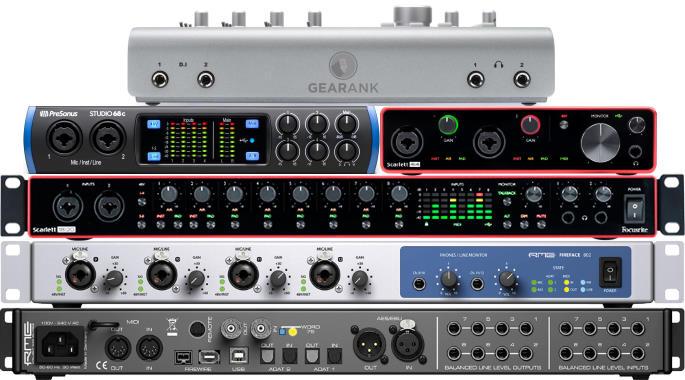
2 Channel Audio Interface - 2 Inputs
The following 2 channel interface is great for people who want a compact option, with a sound usually reserved for large format consoles. The small format allows it to be integrated into mobile music production workflows.
Universal Audio Volt 276
Cons
- Needs 2 USB ports to power and transfer data
- Limited compressor settings
- Lack of Optical S/PDIF out
Pros
- Exceptional Build Quality
- High quality compressor and preamps
- Great compatibility
The Volt 276 by Universal Audio (UA) is a remarkable audio interface with exceptional build quality, offering solid construction that ensures durability and longevity. Its high-quality built-in compressor enhances signals naturally, making it particularly effective for vocals and guitar/bass recordings.
This interface seamlessly integrates with devices like the iPad Mini Gen 6 and MacBook Pro, making it convenient for recording and production. It boasts very low latency, a crucial feature for real-time monitoring and recording, and its intuitive setup ensures you can start recording without extensive technical knowledge.
Separate monitor and headphone volume controls provide greater flexibility, contributing to an efficient workflow. The included software bundle further enhances its value, making it suitable for various purposes, including streaming, podcasting, and recording vocals and instruments.
However, there are a few drawbacks to consider. The interface requires two USB ports when connected to a laptop, which may be inconvenient for some users.
Additionally, the built-in analog compressors offer only three presets, which could be limiting in specific studio settings. While the Volt 276 is pricier than other interfaces, many users believe its performance justifies the cost. One notable limitation is the absence of an optical SPDIF out.
The Universal Audio Volt 276 audio interface impresses with its exceptional build quality, high-quality compressor, and improved sound quality. It offers seamless compatibility with various devices, low latency, and an intuitive setup process. While it may have some limitations, such as the requirement for dual USB ports and limited analog compressor presets, its overall performance justifies its price point. For those seeking versatility and exceptional audio quality in their recording endeavors, the Volt 276 proves to be a solid investment.
Tech Specs
- A/D Resolution: Up to 24-bit/192kHz
- Simultaneous I/O: 2 x 2
- Inputs: 2 x XLR-1/4" combo (mic/line/Hi-Z)
- Outputs: 2 x 1/4" (L/R)
- Computer Connectivity: 1 x USB Type C (Class Compliant)
- MIDI: In/Out
- Preamps: 2 x mic preamps
- Power: USB bus powered / 5V DC power supply (sold separately)
- Phantom Power: +48V
- Bundled Software: Ableton Live Lite, Melodyne Essential, UJAM, Softube Marshall, Plugin Alliance Ampeg, Relab LX480 Essentials
| Website | Source | *Rating Value |
| Premier Guitar | Charles Saufley | 93/100 |
2 Channel Author's Pick
In this section, I talk in-depth about an interface that I use in my studio.
PreSonus ioSTATION 24c
Cons
- Sleep mode tends to "sleep" too early making a pop sound when reactivating the interface
- Not the best integration with Reaper - has complete functionality with other major DAWs
- Preamp coloration at higher gain settings can be too much
Pros
- Perfect marriage of improved workflow and sound quality
- Open sounding XMAX preamps captures extended highs and lows
- Motorized fader mappable to most popular DAWs
- Although limited functionality in Reaper, integration was surprisingly quick
Hybrid products have always been a part of audio engineering gear since the development of the mixing console. Channel strips that combined multiple pieces of gear in a modular fashion were one of the earliest innovations in the field. Most gear these days remain unchanged since their inception with the exception of the rise of audio interfaces, MIDI controllers, and DAW controllers.
I've been looking at a new interface ever since I felt that the preamps on my Focusrite 18i20 were not doing my new microphones justice. I've also been interested in exploring hardware DAW controllers in the past and got interested in items like the Presonus Faderport.

Because of my current workflow of using analog summing emulator plugins like Waves NLS and Brainworx BX_Console, I've been wanting a more "hands-on" approach to my mixing. At first I considered getting analog summing mixers but found they would be limiting. I was completely satisfied with the plugin emulations. So I decided to shop for a new interface and a DAW controller.
This is why I was surprised to find that a product like the PreSonus ioSTATION 24c existed. It is a combination of a 2 preamp audio interface and the company's own Faderport. Once I read about it more and found that the XMAX preamps were getting a lot of praise from users, I knew I had to get it.
The layout is similar to the Faderport with the addition of two gain knobs, a line button, a phantom power button, a direct monitor mix, headphone volume, main volume, and a mute button for the main out for quick swaps to headphone monitoring.
The Faderport side has a motorized fader, individual buttons for solo, mute, arm, a multi-function knob, and more. A transport control cluster rounds out the front panel of the ioSTATION 24c.
The I/O section is placed in the rear with two combo XLR/TRS inputs for the XMAX preamps, Main L/R outs, Headphone Out, Power Button, and USB connection.
One of my favorite things about the ioSTATION 24c is how fast it integrated with my DAW of choice: Reaper. While it has preset mapping for major DAWs like Studio One, Cubase, Ableton Live, and ProTools, I was worried that it might not support Reaper fully. While most of the features like marker skipping are unavailable for Reaper, the motorized fader, transport, solo, mute, and arm are all I needed to experience a faster workflow.
The XMAX preamps did not disappoint. Compared to my old Focusrite, the XMAX preamps have a more "open" sound out with better high and low frequency extension. With higher gain settings and running the mic preamps hot, some subtle saturation and compression come in, adding a bit of harmonics without it sounding distorted. The Focusrite tends to impart a "boxy" midrange on some voices and D.I. sources. Although it has a distinctive tone, I personally prefer preamps such as the XMAX that offer more subtle coloring. It has great clean headroom and adds a subtle sheen to vocals.
The transport controls were responsive to my DAW and punching in recordings felt faster. At this point, any marginal improvement to my workflow is a major improvement to my overall production so the ioSTATION 24c wins my vote in that regard.
One con that I noticed immediately was how the interface would go on a sort of "sleep mode" when no sound from my computer is playing. When a sound is played, there is a noticeable delay followed by an audible "pop" that seems to indicate the interface is waking up from a standby state. I have yet to see how to resolve this and if someone could point me to solutions, feel free to write in the comments below.
Another con that I chose to overlook is the limited functionality of the unit with the DAW I use (Reaper). Other Major DAWs can make better use of the ioSTATION 24c's functionality.
The ioSTATION 24c felt like a definite upgrade in terms of sound, workflow, and overall production value for me. It helped me get that last marginal improvements and optimizations in my workflow by allowing me to get hands-on with my music production. I can close my eyes and rely on my ears and touch riding a fader to balance tracks; something that was near impossible to do with just a mouse and keyboard. I highly recommend this for project studios looking to get into the more tactile side of audio engineering.
Listen to the recordings and see my opinion of them in the Extended Review.
Tech Specs
- A/D Resolution: Up to 24-bit/192kHz
- Simultaneous I/O: 2 x 2
- Inputs: 2 x XLR-1/4" combo (mic/line/Hi-Z)
- Outputs: 2 x 1/4" (L/R), 1 x 1/4", 1 x 1/4" (footswitch)
- Computer Connectivity: 1 x USB Type C (Class Compliant)
- MIDI: none
- Preamps: 2 x XMAX mic preamps
- Power: 12V DC power supply (included)
- Phantom Power: +48V
- Bundled Software: Studio One Artist, Studio Magic Plug-in Suite
| Website | Source | *Rating Value |
| Gearank | Raphael Pulgar | 96/100 |
| MusicRadar | Computer Music | 90/100 |
4 Channel Audio Interface - 4 Inputs
A 4 input audio interface offers portability with more input and output options than 2-channel interfaces. These are the best audio interfaces for beginners. These are also affordable options for those who want to expand their home recording without spending too much.
Focusrite Scarlett 4i4 3rd Gen - Best Buy Audio Interface
Cons
- The headphone amp is still lacking when it comes to driving high-impedance headphones
Pros
- "Air" ISA preamp simulation feature found previously only in more expensive Focusrite models
- Inclusion of MIDI ins and outs
- Improved gain range to the already well-loved Scarlett preamps
Focusrite has an interface for every need, from the minimal Focusrite Solo to the Scarlett 18i20.
The 4i4 sits in a comfy middle ground with 2 combo input preamps, 2 1/4" inputs, and 4 outputs. It offers more mic inputs to accommodate the requirements of many home studio configurations.
Each preamp has an additional "Air" setting that brings in an upper-midrange lift similar to their famed ISA series preamps. This feature was added to this 3rd generation of interfaces from Focusrite, including the 4i4.
For the 3rd gen, Focusrite improved the gain range on their preamps to drive dynamic mics better. There was already so much to love in the preamps of the previous 4i4 - their low self-noise, impressive clarity, and detailed capture.
Still, with all these improvements, I would like to have them give this interface more gain in the headphone amp to drive my higher-impedance headphones a bit louder.
The Focusrite Scarlett 4i4 is a mid-entry powerhouse with features carried over from their upper-tier Clarett line. It's a best buy audio interface if you need a compact, USB powered 4 channel audio interface. It has enough inputs for multiple performers, including MIDI.
Tech Specs
- A/D Resolution: Up to 24-bit/192kHz
- Simultaneous I/O: 4 x 4
- Inputs: 2 x XLR-1/4" combo (mic/Hi-Z), 2 x 1/4" (line)
- Outputs: 4 x 1/4" (line out)
- Computer Connectivity: USB 2.0 (Class Compliant)
- MIDI: In/Out/USB
- Phantom Power: +48V
- Power Supply: USB Bus Powered
- Bundled Software: Focusrite Control, Ableton Live Lite, Focusrite Red Plug-in Suite, 3-month Avid Pro Tools Subscription
| Website | Source | *Rating Value |
| Recording Magazine | Paul Vnuk Jr. | 90/100 |
| MusicRadar | Jon Musgrave | 90/100 |
Universal Audio Volt 476P
Cons
- Unit stays on when plugged into USB
- Iffy USB port may lead to disconnections
Pros
- Pro-level preamps enhance good microphones
- The 1176 Universal Audio Compressor button works flawlessly for vocals and acoustic guitar
- Noticeably better sounding than most audio interfaces in price range
- Monitor patch options a welcome addition
The Universal Audio Volt 476P is an audio interface designed to handle bigger recording projects. One of its standout features is its four pro-level preamps, which enhance the performance of good microphones. Whether you're recording vocals or acoustic instruments, these preamps deliver professional-grade sound quality. The built-in 1176 Universal Audio Compressor button works flawlessly for vocals and acoustic guitar, ensuring a balanced sound by taming peaks and enhancing dynamics.
Another reason to consider the Universal Audio Volt 476P is its impressive sound quality. Compared to most audio interfaces in its price range, the 476P provides noticeably better clarity and fidelity when recording vocals, guitars, or other instruments. This is an important feature for musicians and producers who want to achieve professional-sounding recordings.
The Universal Audio Volt 476P also offers thoughtful features that make monitoring a breeze. The addition of monitor-level lights for each channel and the ability to route audio to multiple speakers or mixer channels ensures that monitoring is easy and efficient. This is particularly important for larger recording projects where multiple channels must be monitored simultaneously.
While the Universal Audio Volt 476P has many pros, it has drawbacks. One issue is that the unit stays powered even when plugged into a USB, which may concern those who prefer to turn off their gear completely. Additionally, some users have reported occasional disconnections due to the USB port, so securing the cable is essential to avoid interruptions during recording sessions.
Despite these cons, the Universal Audio Volt 476P remains an excellent choice for musicians and producers working on larger projects who want to balance portability and functionality.
Tech Specs
- A/D Resolution: Up to 24-bit/192kHz
- Simultaneous I/O: 4 x 4
- Inputs: 4 x XLR-1/4" combo (mic/line)
- Outputs: 6 x 1/4" TRS
- Computer Connectivity: USB 2.0
- MIDI: In/Out
- Preamps: 4
- Power: 5V DC power supply (included)
- Phantom Power: Yes
- Bundled Software: Ableton, Softube, Celemony, Relab, UJAM, Plugin Alliance, Spitfire
4 Input Audio Interface + Extended Channels
This type of audio interface offers 4 built-in channels plus the capability of increasing inputs with an additional preamp unit. These are worth a look if a standard 4 input audio interface is too limiting but still wants expandability.
Audient iD44
Cons
- No MIDI ports
Pros
- Pristine-sounding mic preamps
- Excellent headphone preamps that can drive high impedance headphones
- Inclusion of send/return inserts generally not found in this price point
Audient's tagline for the iD44 is "For the Creatives." It is meant to cater to the needs of productive artists.
The iD44 sits neatly on a typical home/project studio desktop with a layout inspired by mixing consoles. Form factor aside, the iD44 works great specifically as an upgrade from older or cheaper audio interfaces.
Several expansion options are also available via Optical I/O. The iD44 was designed to grow with your studio, with additional inputs available should you choose to bring in more input options like a dedicated 8-channel preamp such as the Focusrite Octopre and other similar units.
2 Channels also have dedicated sends and returns for connecting outboard gear.
I dare call this a "Game Changer," with many features often seen in large format consoles. The presence of send/return inserts on 2 channels is generally unseen in most audio interfaces of this size. It has 2 headphone outputs and can drive bigger headphones easily—no need for a separate headphone amp to push higher impedance headphones like the Audio-Technica ATH-R70x.
Even after expanding a studio with more inputs, additional preamps, and outboard gear, this can still be an integral part of your studio setup.
The lack of a MIDI port is a minor lowlight for an otherwise fully-featured audio interface. Despite being a 4 channel audio interface, it only has 2 XLR inputs, which may be enough with an external preamp with additional channels.
The Audient iD44 packs some serious features for those accustomed to big studio workflow and controls but want something similar in a compact and uncompromising package if you can live without MIDI I/O. Cons aside, It was designed with your progress as an engineer in mind, making it more of a long-term investment rather than just another piece of gear in an upgrade path.
Tech Specs
- A/D Resolution: 24-bit/192kHz
- Simultaneous I/O: 20 x 24
- Inputs: 2 x XLR-1/4" combo (mic), 2 x 1/4" (Hi-Z), 2 x XLR-1/4" combo (mic/line), 2 x Optical Toslink (ADAT), 2 x channel inserts
- Outputs: 4 x 1/4", 2 x 1/4" (headphones), 2 x Optical Toslink (ADAT)
- Computer Connectivity: USB 2.0 (Class Compliant)
- MIDI: none
- Preamps: 4 x mic, 2 x instrument
- Phantom Power: +48V
- Bundled Software: Audient iD Mixer
| Website | Source | *Rating Value |
| Gearspace | Arthur Stone | 100/100 |
| Tape Op | Alan Tubbs | 98/100 |
RME Babyface Pro FS - Best Portable Audio Interface
Cons
- Mixer software interface slightly clunky
Pros
- Extremely good low latency performance
- Versatile and expandable form factor - switch from studio production to fieldwork with ease
- Stable sync and low jitter when used with outboard gear
- Portable form factor
RME's follow-up to their popular Babyface Pro interface features upgraded components over its predecessor. This includes better clocking for syncing up with additional external preamps and sources. What this means is hassle-free outboard gear integrations down the line.
Integrating their "Steadyclock FS" tech from the ADI-2 Pro AD/DA converter, this Babyface ensures stable sync and low jitter across different outboard gear.
Also, the low latency performance is stunning in typical RME fashion. It's usable even when running multiple plugins during tracking.
The headphone amplification was also improved. It can drive higher-impedance headphones with lower noise and distortion. Gain-hungry headphones like the Sennheiser HD600 can be more easily driven without needing an external headphone amplifier.
Long-term scalability is a notable advantage of the Babyface Pro FS. With a great clock sync and S/PDIF and ADAT I/O, it easily doubles up as a compact interface on the go or as a centerpiece to an expanded 12 in / 12 out I/O ecosystem.
These are all great features to have in a portable audio interface.
One limitation is the mixer app, which may need a more user-friendly interface. The fact that phantom power is only controlled via the app is also a negative and increases your reliance on the high learning curve software.
The RME Babyface Pro FS builds on its predecessor by bringing a compact but expandable interface. In an already crowded market of compact interfaces, the RME Babyface Pro FS stands out as one that can fill both mobile and centerpiece positions in a studio. And it does so while retaining high audio signal quality.
Tech Specs
- A/D Resolution: 24-bit/192kHz
- Simultaneous I/O: 4 x 4 (analog), 8 x 8 (digital)
- Inputs: 2 x XLR (mic), 2 x 1/4" (Hi-Z/line), 1 x Optical Toslink (ADAT, S/PDIF)
- Outputs: 2 x XLR (+4dBu/+19dBu), 1 x Optical Toslink (ADAT, S/PDIF), ,1 x 1/4", 1 x 1/8" (Headphones)
- Computer Connectivity: 1 x FireWire 400, 1 x FireWire 800, 1 x USB Type B (Class Compliant)
- MIDI: In/Out via Breakout Cable
- Preamps: 2 x mic, 2 x instrument
- Phantom Power: +48V
- Bundled Software: ME TotalMix FX, Total Mix Remote (iOS, Mac, PC), Brainworx Plug-ins, Scuffham S-Gear Amp Collection
| Website | Source | *Rating Value |
| Audio Science Review | amirm | 90/100 |
| Sound On Sound | Robin Vincent | 96/100 |
6 Channel Audio Interface
A 6 input audio interface with 6 Channels is the middle ground between portability and inputs. Most interfaces in this range still have compact enclosures and USB Bus power.
Focusrite Scarlett 8i6 3rd Gen
Cons
- Clunky routing software
- Feature set may be too specific for common use - not as portable as some, yet not as many preamps as others
Pros
- Fits a specific niche perfectly - has MIDI I/O and S/PDIF I/O with only 2 preamps
- Sports 3rd gen Scarlett preamps including "Air" function and improved headroom
The Scarlett 8i6 is an "in-betweener" interface, bridging the gap between the 4i4 , which has no S/PDIF capabilities, and the 18i8 with additional I/O options at a price jump.
The 8i6 has 2 preamps, 4 line inputs, MIDI I/O, and S/PDIF I/O for 8 maximum simultaneous inputs. Perfect for recording multiple instruments like drum machines and synthesizers.
The 3rd Gen 8i6 features the new "Air" switch and revamped preamps with more headroom.
The 8i6 is a godsend for home producers that doesn't need a lot of inputs for outboard gear. Given its price range and functionality, most bedroom producers can skip jumping to the next interface in the lineup.
On a lower note, the routing software is clunky. The 8i6 is the most niche product in the lineup since it barely adds anything to the 4i4 but loses to the 18i8 in terms of features. The middle-ground solution is not always the optimal compromise. Having only 2 preamps also prevents it from being used as an interface to record using a full drum mic kit.
The 8i6 caters to a particular crowd: One that prefers to use S/PDIF but wants to avoid being bothered by additional inputs they aren't likely to use or are on a limited budget. If this is you, then this is highly recommended. If not, the Scarlett 18i8 gives you more input and output options.
Tech Specs
- A/D Resolution: Up to 24-bit/192kHz
- Simultaneous I/O: 8 x 6
- Inputs: 2 x XLR-1/4" combo (mic/Hi-Z), 4 x 1/4" (line), 1 x Coax (S/PDIF)
- Outputs: 4 x 1/4" (line out), 1 x Coax (S/PDIF), 2 x 1/4" (headphones)
- Computer Connectivity: USB 2.0
- MIDI: In/Out
- Preamps: 2 x 3rd-generation Scarlett mic preamps
- Phantom Power: +48V
- Bundled Software: Ableton Live Lite, Pro Tools First Creative Pack, Red Plug-in Suite, Focusrite Collective access
| Website | Source | *Rating Value |
| Ask Audio | Hollin Jones | 95/100 |
| Recording Magazine | Alex Hawley | 90/100 |
8 Channel Audio Interfaces with 8 Inputs + Expandable Channels
When you're planning on recording over four sound sources simultaneously, like when miking an acoustic drum kit, a singing group, or a band - you'll need a capable 8 channel audio interface with more inputs.
Focusrite Scarlett 18i8 3rd Gen
Cons
- Only has ADAT in and no output
Pros
- 4 mic preamps make it a clear step up from the 8i6 without sacrificing too much portability
- Includes everything great about the 3rd generation of Scarlett interfaces, such as the "Air" feature
- Perfect loadout for duos featuring 2 singers and 2 guitars
The 18i8 represents the first real jump in inputs for the Focusrite Scarlett 3rd Gen range.
With 4 mic preamps, 4 line inputs, S/PDIF, MIDI I/O, and an ADAT In, it carries the potential to provide 18 total inputs when you connect an 8 channel preamp like the Focusrite Scarlett Octopre (or the cheaper Behringer ADA8200) into the 18i8.
Mobility is the name of the game today. It's a mobile interface you can connect at home to maximize the entire input range or on the road to take your recording ability anywhere. The 18i8 is designed for people who prefer the best of both worlds. This ensures that there will be ample mic and instrument inputs. Speaking of instruments, this is a great pick if you're looking for the best audio interface for guitar.
A compromise to fit the price bracket is it only having ADAT in but no output. Having an ADAT out would have increased the versatility of this device. This added feature would have allowed it to "slave" to a higher-end interface with better converters.
The 18i8 is in a broader segment in the Focusrite range. It has the expandability of a full audio interface while remaining as compact as possible for road use. It doesn't have all the inputs of the 18i20 but is a definite step up from the 8i6.
Tech Specs
- A/D Resolution: Up to 24-bit/192kHz
- Simultaneous I/O: 18 x 8
- Inputs: 4 x XLR-1/4" combo (mic/Hi-Z), 4 x 1/4" (line), 1 x Coax (S/PDIF), 1 x Optical
- Outputs: 4 x 1/4" (line out), 2 x 1/4" Headphones, 1 x Coax (S/PDIF)
- Computer Connectivity: USB 2.0 (Class Compliant)
- MIDI: In/Out
- Preamps: 4 x mic preamps
- Power Source: 12V DC power supply (included)
- Phantom Power: +48V
- Bundled Software: Ableton Live Lite, Pro Tools First Creative Pack, Red Plug-in Suite, Focusrite Collective access
| Website | Source | *Rating Value |
| YouTube | RebirthofSOC | 97/100 |
| YouTube | Larry Ivy | 88/100 |
Roland Octa Capture
Cons
- Included Ableton Live LE limits inpuits to 4, halving the unit's potential
- Might not be enough inputs for more complex drum setups
- Has some noise issues
- Reverb has limited options
Pros
- Topnotch build quality
- Great compatibility
- Near-zero latency for high end computer setups
- Expandable to 16 track inputs
The Roland Octa-Capture redefines portable audio interfaces with exceptional build quality and feature-rich design. Its solid construction ensures longevity, making it a wise investment that stands the test of time. Furthermore, Roland has a track record of providing software and operating system updates, ensuring compatibility with current systems, including Windows 10/11.
One of the standout features of the Octa-Capture is its eight premium preamps, making it suitable for recording multiple instruments simultaneously. The Auto-Sens feature optimizes input levels, streamlining the recording process. The Versatile Software (VS) enhances the overall recording experience. Additionally, powerful computer setups report near-zero latency, allowing for real-time monitoring during recording, while custom mixes for individual musicians are crucial for collaborative recording sessions.
While the Octa-Capture excels in many aspects, it has some limitations. The software limitation with Ableton Live LE, which has a 4-input restriction, may be insufficient for recording setups that require more inputs, such as drum sets with multiple microphones. Due to limited input options, it may not be ideal for complex drum setups. Additionally, there is a slight noise issue with HI-Z inputs when used for reamping purposes, which can be mitigated with additional equipment. Adjusting the Sens knob, which maps to inputs and outputs, may result in a crackling, "digital" sound, potentially problematic for live adjustments during performances. Lastly, the reverb unit is only available on one mixer, which may only partially accommodate all band members during monitoring.
Despite these considerations, the Roland Octa-Capture remains an excellent choice, offering exceptional product quality, expandability, and a user-friendly design. Its versatility, control options, and zero-latency performance make it a top contender for portable recording setups, particularly for those requiring multiple inputs and real-time monitoring capabilities.
Tech Specs
- A/D Resolution: Up to 24-bit/192kHz
- Simultaneous I/O: 10 x 10 (96kHz), 4 x 4 (192kHz)
- Inputs:2 x Combo (Mic/Hi-Z), 6 x Combo (Mic/Line)
- Outputs: 2 x TRS (Main), 6 x TRS, 1 x TRS (Headphones)
- Computer Connectivity: USB 2.0
- MIDI: In/Out
- Preamps: 8 x mic preamps
- Power: DC 9 V (AC adaptor)
- Phantom Power: +48V
- Bundled Software: Ableton Live Lite
| Website | Source | *Rating Value |
| Tape Op Magazine | John Hong | 96/100 |
Focusrite Scarlett 18i20 3rd Gen - Best Rackmount Audio Interface
Cons
- Clunky routing software
Pros
- Time-tested reliability and quality
- Generous amount of inputs and outputs with expansion options for even more
- Improved third generation preamps featuring "Air" ISA emulation and more headroom
The 18i20 is the flagship rackmount audio interface of the Scarlett range. It packs a lot of connectivity features, having 8 mic preamps, 1 S/PDIF in, 2 ADAT ins, and MIDI I/O.
It has enough inputs to record a full band on its own. Additional inputs can be patched in via ADAT for 18 simultaneous inputs. The 20 outputs can route to outboard gear to better monitor mixes in your studio.
Additionally, it includes an integrated talkback microphone.
The 18i20 is the centerpiece of many recording studios. The great thing going for this specific Scarlett interface is the number of mic preamps available on the unit. When combined with additional preamps like the Focusrite Scarlett Octopre, it has more than enough to record a full band and more. This is a "serious" audio interface with good reason: the 18i20 ensures you're ready to handle bigger sessions.
The same clunky routing software included with other Scarlett interfaces is also present here. There were some problems with the drivers on early units, but updates from Focusrite have since resolved those. Those looking for a budget-friendly alternative can look at the Behringer U-PHORIA UMC1820. It is an affordable rackmount audio interface with 8-analog inputs.
The 3rd Gen 18i20 brings a lot to the table. Sure, other interfaces offer the same amount of preamps, but time-tested reliability and quality set the Focusrite Scarlett 18i20 apart. With the new generation having better gain handling and the new "Air" feature trickled down from Focusrite's ISA series preamps, the 3rd Gen 18i20 is a winner.
Tech Specs
- A/D Resolution: 24-bit/192kHz
- Simultaneous I/O: 18 x 20
- Inputs: 2 x XLR-1/4" combo (mic/Hi-Z), 6 x XLR-1/4" combo (mic/line), 1 x Coax (S/PDIF), 2 x Optical (ADAT)
- Outputs: 10 x 1/4" (line out), 1 x Coax (S/PDIF), 2 x Optical (ADAT), 2 x 1/4"
- Computer Connectivity: USB 2.0
- MIDI: In/Out
- 8 x mic preamps
- Phantom Power: +48V
- Low latency monitoring
- Bundled Software: Tracktion 4
| Website | Source | *Rating Value |
| YouTube | sonicstate | 84/100 |
| Prosound News | Frank Verderosa | 86/100 |
12 to 16 Channel Audio Interface
A 12 channel audio interface is more than enough for most home recording studio setups. But if you want more, you can go for a 16 channel audio interface. 16 channels is usually the limit of simultaneous audio inputs for a stand-alone USB audio interface. Hooking multiple devices together via connections like MADI or ADAT is typically an option. Still, investing in an interface with multiple inputs early on is often a good idea if you plan on recording several sources at once, even before you upgrade.
With this edition, we didn't find a 16 channel audio interface that we wanted to recommend based on the highest ratings. So, if it's 16 analog inputs that you wish, check out the 16 Channel Budget Option.
RME Fireface 802
Cons
- The line inputs on the front are only hiZ
- This is not a plug and play interface
Pros
- Great compatibility
- Raw recordings need less of an EQ
- Lows are deep and punchy, highs are sweet and crystal-clear, and the midrange is full and fat
The RME Fireface 802 is a worthy upgrade to its predecessor, the Fireface 800, which has been around for a decade. The new version boasts 30 inputs and 30 outputs, improved mic preamps and converters, and powerful onboard DSP. The built-in monitor controller integrates seamlessly with the optional ARC remote control. While Firewire 400 is still supported, Firewire 800 has been replaced with USB 2.0 for compatibility with current Mac and PC systems. It's a transparent mix translation, has broad compatibility, and exceptional sound quality. The Fireface 802 is a top choice for professionals seeking outstanding audio quality, flexibility, and long-term reliability.
The Fireface 802 offers independent headphone outputs and simultaneous use of mic and line inputs. The clarity extends to the bass frequencies, allowing you to address low-end issues precisely. Raw recordings captured through this interface require minimal EQ adjustments. The lows are deep and punchy, the highs sweet and crystal-clear, and the midrange full and fat. While the line inputs on the front panel are exclusively designed for high-impedance (Hi-Z) instruments, the rear inputs can be used for standard line-level sources.
The drivers for the Fireface 802 are impressively versatile and work seamlessly across a range of Mac systems, from an old 2008 Mac Pro to the latest M1 Macs. The interface delivers exceptional performance and flexibility and remains one of the best interfaces in its price range, instantly elevating home studios to a more professional level. However, it's not a plug-and-play solution, and setting up routing, configuring DSP effects, and optimizing settings may require some initial effort.
The RME Fireface 802 continues the legacy of its predecessor while incorporating modern enhancements. Whether you're a recording artist, producer, or engineer, the Fireface 802 delivers exceptional performance and flexibility. It's a top choice for professionals seeking exceptional audio quality, flexibility, and long-term reliability. While it's not a plug-and-play solution, the results are well worth the initial effort.
Tech Specs
| Website | Source | *Rating Value |
| Sound On Sound | Sam Inglis | 97/100 |
| MusicTech | Editor | 80/100 |
16 Channel Budget Option
This one wouldn't have made it into the list based on some user experiences with earlier versions of its software and drivers. However, these issues have been reduced over time, if not completely removed.
Tascam US-16x08
Cons
- Driver issues
Pros
- Quite affordable for the number of inputs
- Good quality preamps
- Easy to setup
In the US-16x08, Tascam has produced a superb piece of hardware at a great price, but driver issues have hampered it. This is reflected in its lower Gearank rating.
Do a little research on resolving its driver issues, and you might end up with a bargain.
This rack mount audio interface offers 16 channels of inputs, 8 of which are Ultra-HDDA microphone preamps, plus 8 line-level inputs. Being an 8 channel interface, it presents an incredible value.
It is USB Class compliant, so you will be able to use the basic IO features with no need for Tascam's drivers, and this also provides compatibility with 'driverless' devices such as the iPad.
I'm impressed with the quality of the preamps, given the affordability of this interface; they provide a strong signal and low noise operation. The setup process is straightforward.
There were some problems with the drivers in the past, with reports of crashing, high CPU usage, and audio interruption.These problems have been reported less frequently since the new Version 4.00 of Settings Panel for Windows was released.
If you're looking for 16 channels of input on a budget, this is an option to consider. Being a rackmount audio interface is also a plus. I'm delighted with the performance it offers, and Tascam is making strides in rectifying the driver issues. A little patience might make the US-16x08 a perfect solution for you.
Tech Specs
- A/D Resolution: 24-bit/96kHz
- Simultaneous I/O: 16 x 8
- Inputs: 8 x XLR, 8 x 1/4" Balanced (2 switchable to Hi-Z instrument)
- Outputs: 8 x 1/4" Balanced, 1/4" Stereo Headphones
- Computer Connectivity: USB 2.0 - Class Compliant
- MIDI: In/Out
- Preamps: 8 x Ultra-HDDA microphone preamps
- Phantom Power: +48V switchable for channel 1-4, 5-8
- Extra Functionality: Works as an 8-channel microphone preamp when not connected to USB
- Onboard DSP: Mixer with 4-band EQ and compression on each input channel
| Website | Source | *Rating Value |
| Gearspace | cojazz | 90/100 |
| YouTube | IbandUK | 90/100 |
Things to Consider When Buying an Audio Interface
-
This is the number of analog inputs that can be transferred to separate tracks on your computer, which sounds simple. However, some manufacturers fudge the number slightly to give a higher channel count.
Many of them include digital input channels to their devices, such as SP/DIF or ADAT in the channel count, even though these would require another piece of hardware acting as an audio interface (EG, some mixers and mic preamps also provide A/D conversion) to allow them to be used. So, a "16 channel audio interface" might only handle 8 analog inputs.
Therefore, we've classified the interfaces in our guide by the number of analog channels that can be input and sent as separate channels via USB. Not that these extra digital input channels are a handy option when you want to expand, but they won't help you if you don't have another compatible audio interface. A rack mount audio interface might not always come with 8 XLR inputs.
Note that some compact USB audio interfaces, like the Behringer UCA222, have no XLR inputs. They are meant for a different purpose, like connecting a mixer to a computer via RCA inputs.
-
In addition to knowing the number of inputs, you must also see the type of inputs available: line level (low impedance) or instrument level (high impedance) inputs. Instrument level ports are for electric guitars and basses without active pickups/preamps, while you can plug keyboards, amps, and other electronic instruments into the line-level input.
XLR inputs are usually accompanied by a preamp to handle microphones. Combo XLR/TRS inputs usually have preamps embedded, so they are mic-ready. Some units have versatile line level and instrument level switching for specific ports. Line level vs instrument level is an important distinction that some musicians know little about.
-
A big part of understand what an audio interface is, is understanding preamps and phantom power.
Built-in preamps allow you to connect microphones and provide phantom power to condenser mics when needed. But they're not just for connectivity because they can also affect the character of the sound and are responsible for keeping noise at bay.
Thankfully, manufacturers rarely skimp on the quality of their preamps, often equipping their entire range of audio interfaces with the same preamp found on their flagship model. Not all inputs will have a preamp, so it is crucial to consider the actual number of preamps available, particularly for recording with condenser microphones.
- As the channels increase, so does the complexity of the electronics and its power requirements. So, you can expect most units listed here to require wall power adapters to keep them running. Still, a few can be bus-powered via USB from a computer. Note that none of them can be powered via the USB from an iOS device - in this case, you need a mains power wall adapter or a Powered USB Hub.
-
These specifications describe the resolution of your converted digital audio, and the general idea is that the higher the Sample Rate, the more details are captured. The Bit Depth determines the maximum dynamic range (difference between loudest and softest), and the Sampling Rate determines the highest frequencies that can be recorded.
The current highest standard is 24-bit/192kHz, but there is a lot of debate about sampling rates, so if you'd like to know more, see The Science of Sample Rates (When Higher Is Better — And When It Isn’t). The main thing to know is that a sampling rate of 44.1kHz will capture all the frequencies that most people can hear. Also, note that the preamp usually plays a more significant role in recording quality.
-
Most audio interfaces come with custom low latency drivers for Windows and Mac that allow you to use the audio channels in your recording software and often control inbuilt hardware features such as effects/DSPs. However, we've consistently found that most serious user complaints about audio interfaces come from a few owners who need help getting these drivers to work correctly.
Often, these can be attributed to people not setting things up properly, but there are some cases where there are genuine problems with the drivers on some systems. Furthermore, many users find that the manufacturer's support in the event of driver problems needs to be improved, and some need to be faster to release fixes for these issues.
We've recommended the interfaces with the least problems, but only some are immune to some degree of complaint. To reduce the chances of encountering these problems, you should ensure drivers are available for your operating system version and check whether other owners have had problems with systems like yours.
One way to avoid manufacturer driver issues is to use a USB Class Compliant interface (audio and possibly MIDI), which means it can use standard drivers that are usually already available in your system. If the manufacturer stops releasing drivers for newer operating system versions, this will also' future-proof' your device. The drawback is that using these drivers may make you unable to access some of the extra features of the hardware, but the primary audio/MIDI channels will work.
If you're looking for compatibility with iOS devices such as the iPad (via the Apple USB adapter), the device must be USB-Class Compliant. It's still best to ensure the manufacturer mentions compatibility, though. You can check out our iPad Audio Interface Guide if you're looking for dedicated iPad audio interfaces.
It is essential to understand that a MIDI USB interface differs from an audio USB interface. MIDI interfaces are not capable of recording audio tracks. Audio interfaces can and often also include MIDI I/O.
-
Most audio interfaces come with bundled software, some of which include "lite" versions of popular DAW software like Cubase, Ableton Live, and more. Others even come with extras like virtual instruments, samples, in-depth software control over the interface, and more. These features should be sufficient for beginner users to get started.
Number of Inputs vs Channel Count
Mic Level, Instrument Level, and Line Level Inputs
Preamp and Phantom Power
Power Options
Analog to Digital Bit Rate and Sample Rate
Operating Systems, Connectivity, and Drivers
Bundled Software
Best USB Audio Interface Selection Methodology
The first edition was published in 2016 and the current edition was published on February 15, 2024.
Our selection criteria were for the best audio interface per category that can use USB to connect with computers (additional connectivity protocols were also allowed) and are available from major USA-based retailers.
For this edition, our shortlist expanded to 86 audio interfaces, which we analyzed further. You can see most of them in our Music Gear Database. We then analyzed over 72,000 rating and review sources comprised of user ratings, reviews, feedback, and forum discussions. The data was then processed using the Gearank Algorithm to produce rating scores out of 100, which we used to select the highest-rated options in each of the above input/channel categories. We also used those sources to report on the pros and cons of each interface we've recommended. For more information about our methods, see How Gearank Works.
About the Author and Contributors
Here are the key people and sources involved in this guide's production - click on linked names for information about their music industry backgrounds.
Lead Author & Researcher
Raphael Pulgar
I've been an audio engineer for 20 years specializing in rock and metal recordings. I also play guitar and produce original music for my band and other content creators.
Some of the recording gear I use in my studio includes the Focusrite Scarlett 18i20, Focusrite Scarlett Solo, Samson QH4 Headphone Amp and Cloudlifter CL-1. My mics include Aston Origin, Aston Element, Shure SM57, Rode NT1, Rode PodMic and MXL V67G.
Contributors
Jerry Borillo and Alden Acosta: Product research.
Daniel Barnett: Supplemental writing.
Alexander Briones & Jason Horton: Editing and Illustrating.
Media
Main/Top Image: Created by Gearank.com using photographs of the Audient iD44, PreSonus Studio 68c, Focusrite Scarlett 4i4, Focusrite Scarlett 18i20 and RME Fireface 802.
The individual product images were sourced from their respective manufacturers' websites, promotional materials or supporting documentation.



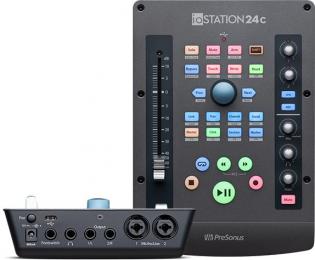

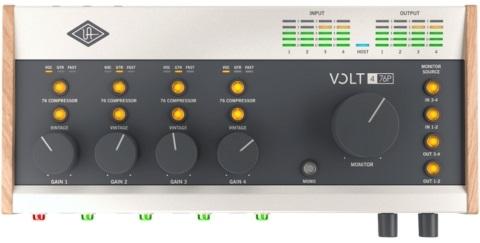
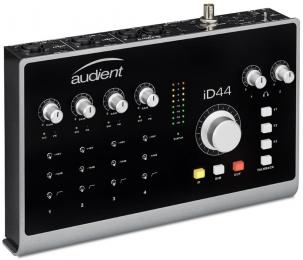
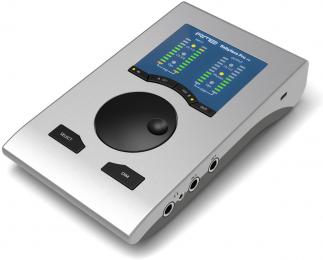
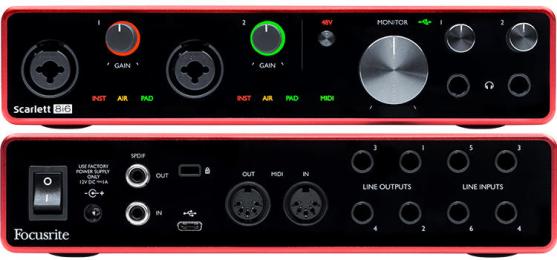
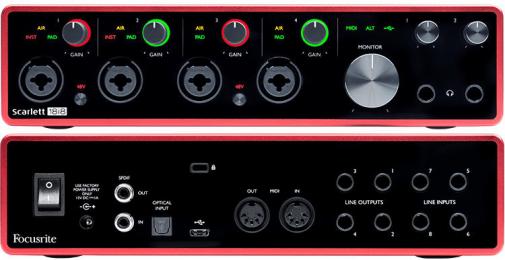
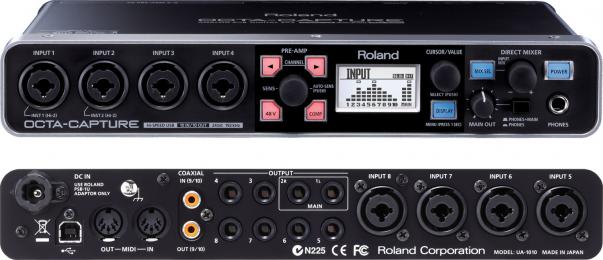




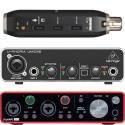

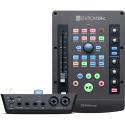

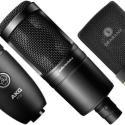
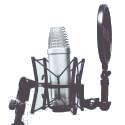

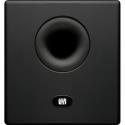
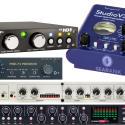
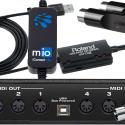
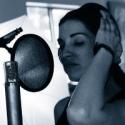
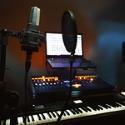
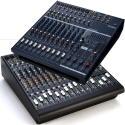



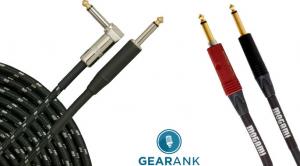
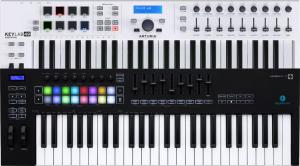
Comments
What a great read. Thanks for
Submitted by Ry (not verified) on
What a great read. Thanks for the information and great work.
Publication of our March 2022
Submitted by Jason Horton on
Publication of our March 2022 Edition resulted in the following interfaces coming of the recommended list above, but you can still see our analysis of them:
Hello,
Submitted by RAJKUMAR (not verified) on
Hello,
we have a requirement of audio interface with minimum of 4 channel and compatible with linux os, please suggest the products names which are suitable of our requirement. i have gone through many websites and some of them saying some interfaces are compatible with linux os but in their product data sheet they didn't mentioned anything abou linux os comparability, so please suggest the linux os compatible audio interface with minimum of 4 channel.Thanks in advance
Best Regards
V.rajkumar
Hello V. Rajkumar,
Submitted by Raphael Pulgar on
Hello V. Rajkumar,
As of 2022, I've found information that many class-compliant audio interfaces work with Linux. I have seen communities confirming that MOTU, Focusrite and RME interfaces work so those are your best bets.
-Raphael
I look forward to an update
Submitted by John E1 (not verified) on
I look forward to an update that includes Solid State interfaces and how they compare. Thanks!
The Solid State Logic SSL 2
Submitted by Jason Horton on
The Solid State Logic SSL 2 and SSL 2+ didn't qualify for this guide because they only have 2 analog inputs, however based on your question and interest from others we will consider changing this requirement for future updates.
In the meantime, I've published our ratings for both of them here.
Publication of the October
Submitted by Jason Horton on
Publication of the October 2021 Edition resulted in the following interfaces coming off the recommended list above:
The Focusrite Clarett 8Pre
Submitted by Jason Horton on
The Focusrite Clarett 8Pre has been removed from the recommended list above due to being discontinued.
I need to build a 16 mono
Submitted by John (not verified) on
I need to build a 16 mono channels orchestral composition platform with a USB interface. I do NOT need inputs, only outputs with sufficient voltage to excite an analog 16 channel (could be 8 stereo channels, of course) amplifier. I will use a DAW that has simultaneous hardware outputs, such as Reason or Linux Ardour. In your article you mention Apple compatible interfaces (well, most of them are anyway). Since Apple OS is UNIX, can you recommend an interface that will do for me using, say, UBUNTU Studio 21.04?
Thanks, John.
Hi John,
Submitted by Raphael Pulgar on
Hi John,
Ideally, any Class Compliant USB audio interface would be capable of operating with Linux. The only problem is, interfaces like the ones made by Focusrite need to be controlled by their software (i.e. Focusrite Control) and to my knowledge, Focusrite has not made any statement regarding Linux compatibility.
I have done some short research into your question and found linux users Favoring interfaces made by MOTU. Others have had success using interfaces like the Behringer U-Phoria series. Both manufacturers make interfaces with multiple outputs so I suggest you start your search there.
While on the topic of DAWs, I suggest you give Reaper a try if you have your own software synths/plugins.
-Raphael
Support for Focusrite is now
Submitted by Bertold (not verified) on
Support for Focusrite is now in Linux kernel. Alsa audio system have interface for internal fader.
Our October 2020 update
Submitted by Jason Horton on
Our October 2020 update resulted in the following interfaces coming off the recommended list above, but you can still see our analysis of them:
Hi,
Submitted by Carlos Ruiz (not verified) on
Hi,
I am about to start recording a podcast. We will be two people, two co-hosts, and we are trying to set up a good price-value gear to start with.
We are aiming for two dynamic XLR mics. potentially Samson Q2U or Rode Podcaster and an interface. I would really thank if you could advise of an interface below £100 that allows for two stereo output channels. I have read that some interfaces although allow for two output channels, those are really mono channels, which does not look ideal.
We are happy also to receive any piece of advice or recommendation about mics that you could recommend from your store.
Looking forward to reading your comments.
You should really look at the
Submitted by HotAsianGarbage (not verified) on
You should really look at the Yamaha A606, This is specifically geared for podcasters, with Audio loopback functionality. It can be used as a standard Audio interface also, and it even includes basic effects and software. Brand new £145.
I think you meant the Yamaha
Submitted by Jason Horton on
I think you meant the Yamaha AG06.
Does this work with linux?
Submitted by Dwight (not verified) on
Does this work with linux?
Any interface that is USB
Submitted by Jason Horton on
Any interface that is USB Class Compliant will work on Linux however additional features such as effects won't be available without additional software which the manufacturers generally only make available for Windows and Mac OS.
Our December 2019 update of
Submitted by Jason Horton on
Our December 2019 update of this guide resulted in the following audio interfaces being removed from the recommended list above, but you can still read our analysis of them:
Hello,
Submitted by Biqueto (not verified) on
Hello,
Which USB interface among these would you recommend for a basic home theater use (analog 5.1 surround sound) from a pc and a video player like VLC ?
As a result of our January
Submitted by Jason Horton on
As a result of our January 2019 update, the following interface came off our recommended list above, but you can still read our analysis of it:
I was thinking of buying the
Submitted by Vito (not verified) on
I was thinking of buying the Tascam 16x08 to use it as well as in the studio at home, even in live shows with stand-alone digital mixer connected to my mac book pro: do you think you can do it? With its internal mixer you can work without weighing the PC too much and thus avoiding possible crashes in the live? Finally, using it in stand-alone mode it works only as a preamp or can you use the 4-band equalization of its mixer? Thank you
Is it possible to connect
Submitted by Rob (not verified) on
Is it possible to connect sampler/synth output channels to the xlr inputs on the front? will it work normally? or the mic inputs ar specific for microphones only and will worsen the quality of signal? Can`t seem to find general information on this, seems like quite an important problem. (at the same time mine Focusrite scarlett 6i6 can easily take any instrument or line output in to its front xlr combo port)
Is it possible to link two
Submitted by Rossi Craft (not verified) on
Is it possible to link two Tascam 1608’s together to get 16 channels of micrphine preamps available. Or will they work simultaneously and will the software recognize two units? separately? If the answer is no, do you have or recommend an interface that will do this?
Thanks,
Rossi
Try newest Focusrite Clarett
Submitted by CMM (not verified) on
Try newest Focusrite Clarett 4Pre USB - standalone mixing console with ultimate ISA mod preamps and 120dB dynamic and/or 8in USB class compliant interface, great with Cubasis or Auria for iPad user-friendly recordings, but with very high prof studio sound quality. Better specs than RME fireface UCX - the same user interface and use, for a half of price...
As a result of today's update
Submitted by Jason Horton on
As a result of today's update, the following interfaces were removed from our recommended list, but you can still read what we have to say about them:
Regarding the 8 output Tascam
Submitted by Lance (not verified) on
Regarding the 8 output Tascam, will it interface with qlabs on a MacBook pro running version 10.12.6
It looks like no one running
Submitted by Jason Horton on
It looks like no one running the exact same setup as you has answered your question, so even though I haven't used that specific combination myself I can let you know that it will function with your computer in it's basic mode without advanced features because it is Class Compliant - the standard USB drivers will take care of that for you. As to the features requiring the Tascam drivers, I don't know.
hi i have a question about
Submitted by nils (not verified) on
Hi I have a question about the Tascam. to use it with my daw (studio one) would i need to use it's drivers anyways?
Hi nils, You shouldn't need
Submitted by Daniel Barnett on
Hi nils, You shouldn't need to to use drivers to use the core interface capabilities as it can operate as a USB Audio Class Compliant Device. Without drivers however you won't be able to use the DSP functions or Tascam's special software but these are more add-on features. There are people who use the Tascam in class compliant mode on Windows but there's a chance that some fiddling could be required to stop it from wanting to use the drivers.